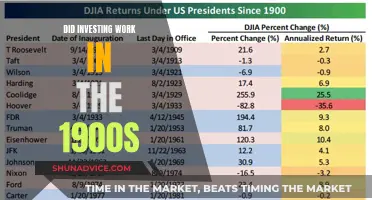
Planning for retirement in Australia involves several key steps to ensure financial security and a comfortable lifestyle. Firstly, it's crucial to start retirement planning early, as it offers a chance to build a substantial nest egg over time. Conducting a financial audit and understanding your retirement goals are essential, including estimating how long retirement might last and the desired lifestyle. This involves assessing debt, income, assets, and expenses to create a comprehensive plan. Saving for retirement is a critical step, and individuals should consider salary-sacrificing pre-tax income into super funds to take advantage of tax benefits.
Investing for retirement is a vital strategy to grow savings, and individuals can explore various investment options such as shares, property, and diversified portfolios to achieve their financial goals. It's important to understand your risk tolerance and investment objectives when deciding where to invest. Retirement income options also play a significant role, and individuals can choose from account-based pensions, lifetime income streams, or the Age Pension to secure regular payments.
With longer lifespans and uncertain financial markets, careful planning is necessary to ensure retirement savings last. Inflation is a critical factor to consider, as it can significantly impact the purchasing power of retirement funds over time. Striking a balance between spending and saving is essential to ensure individuals can benefit from their super savings and maintain their desired lifestyle during retirement.
| Characteristics | Values |
|---|---|
| Life expectancy | Male: 85.3 years; Female: 88 years |
| Retirement duration | 20 years or more |
| Retirement income options | Account-based pension; Combination of different options; Transition to retirement strategy; Age pension; Government benefits; Seniors concessions; Reverse mortgage; Home equity release product |
| Retirement savings | Salary-sacrificing pre-tax income into a super fund; Emergency fund; Paying bills in full and on time; Paying off high-interest debt; Saving tax refunds and bonuses; Adequate health insurance |
| Investment options | Bonds; Stocks or shares; Property; Commodities; Mutual funds; ETFs |
| Retirement income diversification | Income from a range of sources, such as investments, shares, property, or the Age Pension |
| Retirement age | No compulsory retirement age in Australia; Average retirement age: 65.5 years |
What You'll Learn

How much money you need to retire
The amount of money you need to retire comfortably in Australia depends on several factors, including your desired retirement lifestyle, expected living costs, and life expectancy. While there is no one-size-fits-all answer, careful planning is essential to ensure a financially secure retirement. Here are some key considerations to help you estimate how much money you will need for retirement:
- Retirement goals and lifestyle expectations: Think about the kind of lifestyle you want during retirement. Do you want to maintain your pre-retirement standard of living, or are you comfortable with a more modest lifestyle? Consider your daily expenses, leisure activities, travel plans, healthcare costs, and any outstanding debts. Understanding your retirement goals will help you estimate the cost of achieving them.
- Retirement age and life expectancy: The age at which you retire will impact the number of years you need to fund your retirement. Consider your health, life expectancy, and whether you plan to retire early or continue working beyond the standard retirement age. Australians are living longer, with an average life expectancy of 85 years for women and 81 years for men. Planning for a longer retirement ensures you don't outlive your retirement savings.
- Income sources: Your retirement income will likely come from various sources, including superannuation, investments, savings, inheritance, and government support such as the Age Pension. Understand the eligibility criteria for the Age Pension and other government benefits, as these can supplement your retirement income.
- Investment strategies: Consider your investment options to grow your retirement savings. This could include contributing extra funds to your superannuation, investing in income-generating assets such as shares, bonds, or exchange-traded funds (ETFs), or seeking advice from a financial advisor to maximise your investment returns.
- Retirement calculators: Utilise online retirement calculators to estimate how much money you will need during retirement. These tools can help you factor in your current financial situation, expected expenses, and income sources to provide a more accurate estimate of your retirement needs.
Remember, retirement planning is a highly personalised process, and there is no one-size-fits-all solution. By considering your unique circumstances, goals, and expectations, you can develop a tailored plan to ensure a comfortable and secure retirement.
The Great Debate: Mortgage Payments vs. Investing – Where Should Your Money Go?
You may want to see also

How to save for retirement
Saving for retirement is a long-term process that requires careful planning and discipline. Here are some detailed steps to help you save effectively for your retirement:
Conduct a financial audit:
Start by understanding your current financial situation, including your debt, income, assets, and expenses. This will help you set clear and realistic retirement goals. Ask yourself critical questions like how long your retirement might last, how much you will need to fund it, and how much you need to save to achieve your goals.
Understand your retirement goals:
The type of retirement you envision will impact your financial needs. Consider your desired lifestyle, expenses, and income sources. Do you plan to travel frequently, or lead a quieter life? Will you have dependents or health costs to consider? All these factors will influence how much money you need to save.
Start saving:
Take action by contributing to your super fund through salary sacrificing. This means contributing a portion of your pre-tax income to your super, which offers significant tax benefits. Additionally, create an emergency fund for unexpected expenses, pay your bills in full and on time, and reduce high-interest debt.
Invest wisely:
Growing your savings through investing is an important strategy. While saving in a bank account is accessible and low-risk, consider investing in other asset classes like shares, bonds, property, or commodities for potentially higher returns. Understand your risk tolerance and time horizon, and consider diversifying your investments to minimise risk.
Automate your savings:
Impose financial discipline by setting up automatic deposits into your savings account with each pay. This ensures that you save consistently and make your financial future a priority.
Regularly review your savings:
Annually assess your savings progress to ensure you're on track with your financial goals. Make adjustments as necessary to maintain discipline and stay aligned with your retirement plan.
Minimise fees:
Reduce unnecessary costs by using online banking to set up periodic payments for regular bills. Choose low-fee credit cards, and shop around for the best deals on loans, credit cards, and utilities.
Stick to your investment strategy:
Don't make impulsive decisions based on short-term market fluctuations or economic predictions. Maintain your investment strategy and focus on the long-term goals you have set.
Manage risk:
Diversify your investments across different asset classes to balance risk and return. Ensure you have adequate insurance, including health, car, and homeowner's insurance, to protect yourself financially.
Remember, it's never too early or too late to start planning for retirement. By following these steps and seeking professional advice when needed, you can work towards a comfortable and secure retirement.
Kodak Stock: Buy or Pass?
You may want to see also

How to invest for retirement
Step 1: Conduct a Financial Audit
First, you need to understand your financial situation. Ask yourself: how long might retirement last, how much will you need to fund it, and how much will you need to save before you can retire?
Step 2: Understand Your Goals
Get a clear understanding of your debt, income, assets, and expenses. Bear in mind that you might need to fund three decades without a salary. As a rule of thumb, you will need between two-thirds and 80% of your pre-retirement income.
Step 3: Save for Retirement
Don't rely on your employer's super guarantee. If you can, salary-sacrifice pre-tax income into your super fund to take advantage of tax benefits. You should also understand how your super fund is invested and incorporate this into your financial planning.
Step 4: Invest for Retirement
Consider investing to grow your retirement savings. While saving money in the bank is a low-risk option, investing in other asset classes, such as shares, can bring higher returns.
Step 5: Learn Your Investing Profile
Before you start investing, consider how much time you have until you need the money and how risk-averse you are. Generally, a more conservative, lower-risk approach is preferable if you're older, as you have less time to recover from market fluctuations.
Step 6: Decide What to Invest In
There are various investment options available, including bonds, stocks or shares, property, and commodities. Your choice will depend on factors such as risk tolerance, investment objectives, and individual preferences. Diversification is key to managing risk effectively.
Step 7: Diversification is Key
Assets like shares, bonds, and property can provide regular income in the form of dividends, interest payments, or rental income. Building a diversified portfolio across various asset classes will help to minimise investment risk.
Step 8: Ready, Set, Retire
The optimal time to retire depends on your personal circumstances and goals. There is no compulsory retirement age in Australia, but on average, Australians retire at 65.5 years.
Young Investors: Where to Begin?
You may want to see also

How to choose what to invest in
When it comes to investing for retirement, there are a few key things to consider. Firstly, it's important to understand the different types of investments available and the level of risk involved. Generally, investments fall into two categories: defensive and growth.
Defensive investments are lower-risk options that aim to protect your capital and provide a steady income. These include cash, fixed interest investments, government and corporate bonds, and debentures. On the other hand, growth investments offer higher potential returns but come with a higher risk. Examples of growth investments include shares, property, and alternative investments such as private equity, infrastructure, and commodities.
- Time horizon: How long do you plan to invest for, and how long do you want the savings to last once you retire? Short-term investments tend to be less risky, while long-term investments have more time to recover from market fluctuations.
- Involvement: Do you want to be hands-on with your investments, or would you prefer to leave it to the professionals? If you choose to invest yourself, be prepared to put in the time and effort to research and monitor your investments.
- Risk tolerance: How comfortable are you with taking risks? Your risk tolerance will depend on various factors, including your age, financial goals, and health. Generally, older investors prefer a more conservative approach to minimise the impact of market volatility.
- Diversification: Diversifying your portfolio across different industries and asset classes can help balance risk and return. This means that even if one investment performs poorly, your overall portfolio remains stable.
- Fees and charges: Investing comes with various fees, including management fees, administration fees, and entry and exit fees. Consider the cost of investing through a professional investment manager or financial adviser.
- Tax implications: Investments outside superannuation are subject to taxes, so be sure to consult an accountant or financial adviser to understand the tax implications of your investment choices.
Remember, there is no one-size-fits-all approach to investing for retirement. It's essential to consider your personal circumstances, financial goals, and risk tolerance when choosing what to invest in.
Madoff Victims: A Global Reach
You may want to see also

How to plan for retirement income
Retirement can be a gradual process, with varying working hours, or a definite point in time when you stop working. Regardless of your approach, it's essential to have a financial plan to ensure a stress-free retirement. Here are some steps to help you plan for retirement income:
Understand your retirement goals
Before planning for retirement income, it's crucial to understand your retirement goals and desired lifestyle. Do you envision a quiet life or one filled with travel? Will you have financial dependents or anticipate significant health costs? Understanding these factors will help you estimate your income needs during retirement.
Conduct a financial audit
Get a clear picture of your debt, income, assets, and expenses. This will help you determine how much you need to save and invest for retirement. As a general guideline, you'll likely need between two-thirds and 80% of your pre-retirement income. Online budget calculators can assist in tailoring estimates to your specific circumstances.
Save for retirement
Start building your retirement nest egg by contributing to your super fund. Consider salary-sacrificing pre-tax income into your super, as this offers significant tax benefits. Additionally, understand how your super fund is invested and ensure you pay bills on time to avoid unnecessary fees.
Invest for retirement
While saving is essential, investing is also crucial to growing your retirement savings. Consider investing in shares, property, or other asset classes to potentially achieve higher returns. Remember that investing carries risks, so it's important to understand your risk tolerance and seek professional advice if needed.
Diversify your investments
Diversification is key to minimising investment risk. Spread your investments across various asset classes, such as shares, bonds, and property, to balance risk and return. Mutual funds and ETFs provide access to diversified portfolios of assets, helping to further minimise risk.
Plan for inflation and longevity
Australians are living longer, and the cost of living is likely to increase over time. Ensure your retirement income strategies account for these factors. Regularly review your investment plans to ensure they align with your goals and needs, especially as you approach retirement.
Explore retirement income options
Familiarise yourself with the various retirement income options available, such as account-based pensions, lifetime income streams (annuities), and the Age Pension. Understand the eligibility criteria and benefits of each option to make informed choices.
Seek professional advice
Retirement planning can be complex, so don't hesitate to seek professional advice. Your super fund, a licensed financial adviser, or a Services Australia Financial Information Service (FIS) officer can provide valuable guidance. They can help you navigate the different income options, tax implications, and other considerations to ensure a comfortable retirement.
Who Invests and Why?
You may want to see also
Frequently asked questions
This depends on your retirement plans and lifestyle expectations. The Association of Superannuation Funds of Australia (ASFA) estimates that singles will need a yearly retirement income of $32,665 for a 'modest' lifestyle and $51,278 for a 'comfortable' lifestyle. For couples, these figures are $46,994 and $72,148, respectively.
It is never too early to start planning for retirement. The decision to retire is often gradual and influenced by various factors, so it is essential to have a financial plan in place.
There are several investment options available, including bonds, stocks or shares, property, and commodities. A diversified portfolio that includes a mix of asset classes can help minimise investment risk.
Inflation reduces the purchasing power of your retirement savings over time. Even modest annual inflation rates can significantly impact your living expenses in retirement, so it is crucial to consider this in your financial planning.
Your investment strategy should align with your goals and risk tolerance. Generally, a more conservative approach with lower-risk investments is recommended for retirees seeking a regular and reliable income. However, consider the potential impact of inflation and the longevity of your retirement funds.







